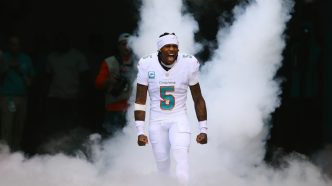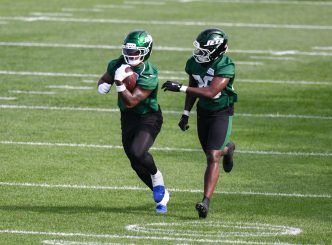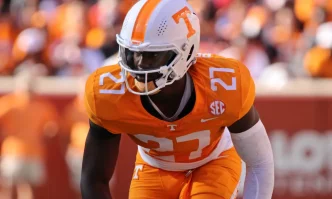The Miami Dolphins find themselves in a precarious situation, and it appears that Chris Grier, the team’s General Manager, is acutely aware of the missteps that have led them here. The situation centers around Jalen Ramsey, a player with immense talent who, it seems, is no longer in Miami’s long-term plans following a mutual agreement to seek a trade. So, how did the Dolphins end up in this challenging predicament?
Initially, reports indicated that Ramsey had no issues with his role or status within the team and hadn’t requested a trade or a salary increase. Yet, circumstances have shifted, leaving Miami in a tight spot. Trading Ramsey now complicates an already difficult salary-cap scenario, putting them further behind the eight ball.
According to expert insights from around the league, including notable comments from Albert Breer at Sports Illustrated, the Dolphins may be faced with the necessity of absorbing a significant portion of Ramsey’s remaining salary to facilitate a trade. Essentially, they might have to “buy” a draft pick just to offload Ramsey, which raises serious questions about their financial maneuverability moving forward.
The ramifications of trading Ramsey could hit the Dolphins hard, especially with regards to their salary cap. While some reports suggest that the organization may have asked Ramsey to consider a pay cut, Grier has firmly denied such claims. What’s evident is a disconnect between the coaching staff—particularly Mike McDaniel—and Ramsey, hinting at underlying tensions that could have precipitated this trade request.
Now, the Dolphins are in a bind. Other teams are aware that Ramsey’s time in Miami is likely coming to an end, which gives them leverage in any negotiations. There’s no pressing need for most franchises to acquire him, viewing him more as a luxurious addition rather than a necessity. This puts Grier in a tough spot, as he must navigate these negotiations while trying to secure the best possible outcome for his team.
Ultimately, trading Jalen Ramsey now feels like a move that could leave the Dolphins with a significant dead cap hit, estimated at nearly $24 million. Grier will have to accept a hard truth: the choices leading up to this moment have severely limited his options. Now, it’s all about moving forward with the best offer on the table, hoping to reshape the Dolphins’ future while absorbing the consequences of past decisions. This is a moment that should serve as a cautionary tale for team management—how quickly the landscape can change and the importance of aligning team visions and salaries to avoid getting buried in financial constraints.








